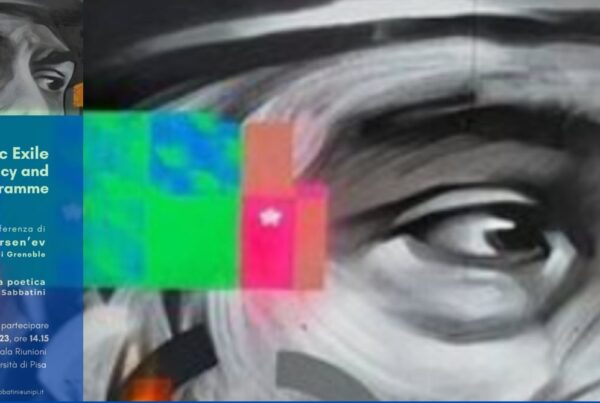In its essence, the samizdat was a community and an act of defiance, a place of ideological and aesthetic exchange in which writers shared not only their texts but also the risks involved in violating social norms and conventions.
There were also, however, writers whose refusal to conform to the dictates of official Soviet literature was not accompanied by a willingness to participate in the samizdat.
These often highly original outcasts, like the writers whose works circulated through samizdat channels, renounced official publication. However, unlike their samizdat counterparts, they were resigned to writing only for themselves, to storing their works in drawers and to putting off publication to an indeterminate future – in most cases after their death. The life circumstances of these writers and their reasons for isolation are highly varied. Many were artists engaged in creative fields subject to less censorship, such as theatre (Evgenii Shiffers, Evgenii Kharitonov), poetic translation (Asar Ėppel’), or cartoon scripts (Gennadii Tsyferov), and were hesitant to sacrifice an at least partially rewarding official recognition. In other cases, isolation was a result of disappointment with official and non-official literary channels (Vladimir Gubin) or an insuperable fear of persecution (Valerii Kholodenko). In some cases, extremely complex or experimental texts did have a microcirculation within a very narrow field of acquaintances (Pavel Ulitin).
The existence of texts hidden away in drawers is a potent metaphor for underground literature. It encompasses the idea of the incomplete and unread masterpiece compulsively modified by its creator ad libitum (Gubin comes to the form of a ‘lifetime text’). These writings destined ‘to be hidden in drawers’ were mostly prose texts, perhaps to provide a firm centre, a point of internal reference, and to create the corporeal illusion of a book.
The lack of circulation of such texts clearly increased the risk of their being lost, both in the author’s lifetime (c.f. for example, the seizure of Ulitin’s manuscripts) and post mortem. In the main, it was only possible for these writers “to come out of the drawer” in the 1990s, often thanks to niche publishing initiatives supported by close friends. Given the short print runs, access remains problematic even today and an unknown number of manuscripts are still unpublished. It is impossible to quantify how many of these works have been lost for good.
Mario Caramitti
[31st December 2022]
Translation by Cecilia Martino
To cite this article:
Mario Caramitti, Samizdat v stol: an introduction, in Voci libere in URSS. Letteratura, pensiero, arti indipendenti in Unione Sovietica e gli echi in Occidente (1953-1991), a cura di C. Pieralli, M. Sabbatini, Firenze University Press, Firenze 2021-, <vocilibereurss.fupress.net>.
eISBN 978-88-5518-463-2
© 2021 Author(s)
Content license: CC BY 4.0





